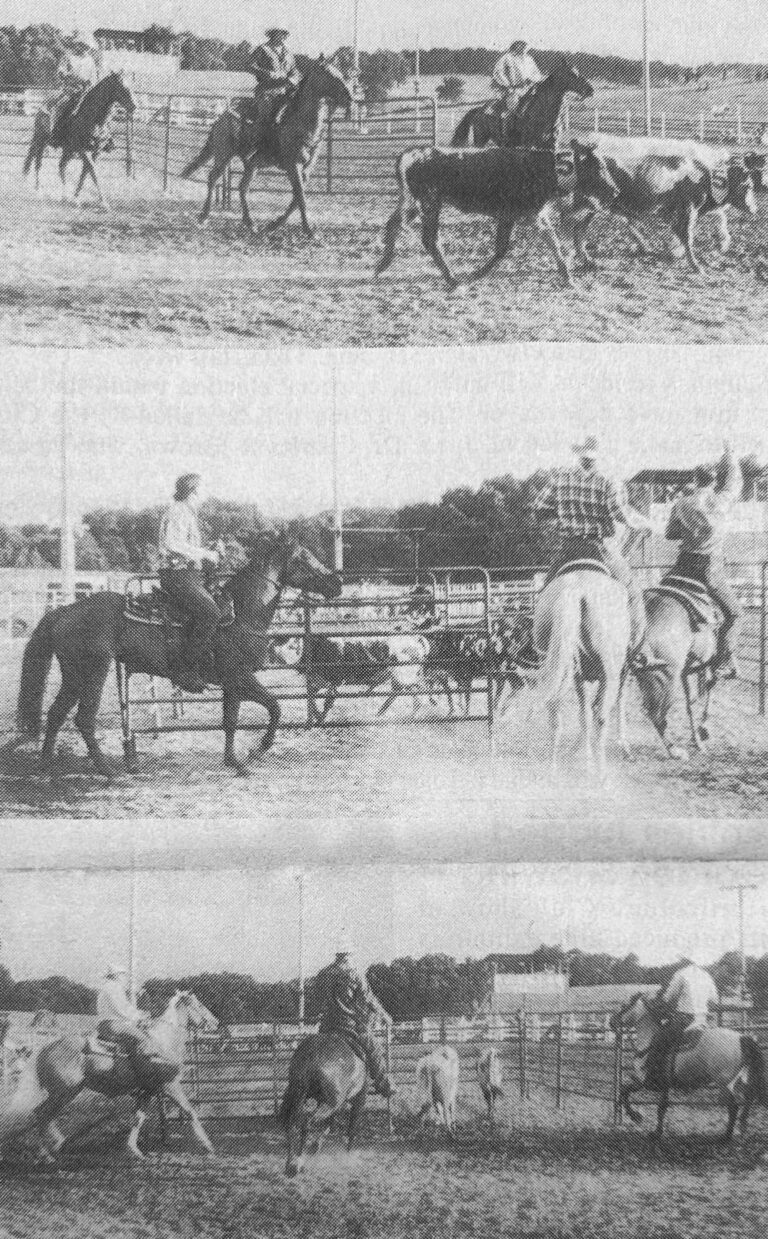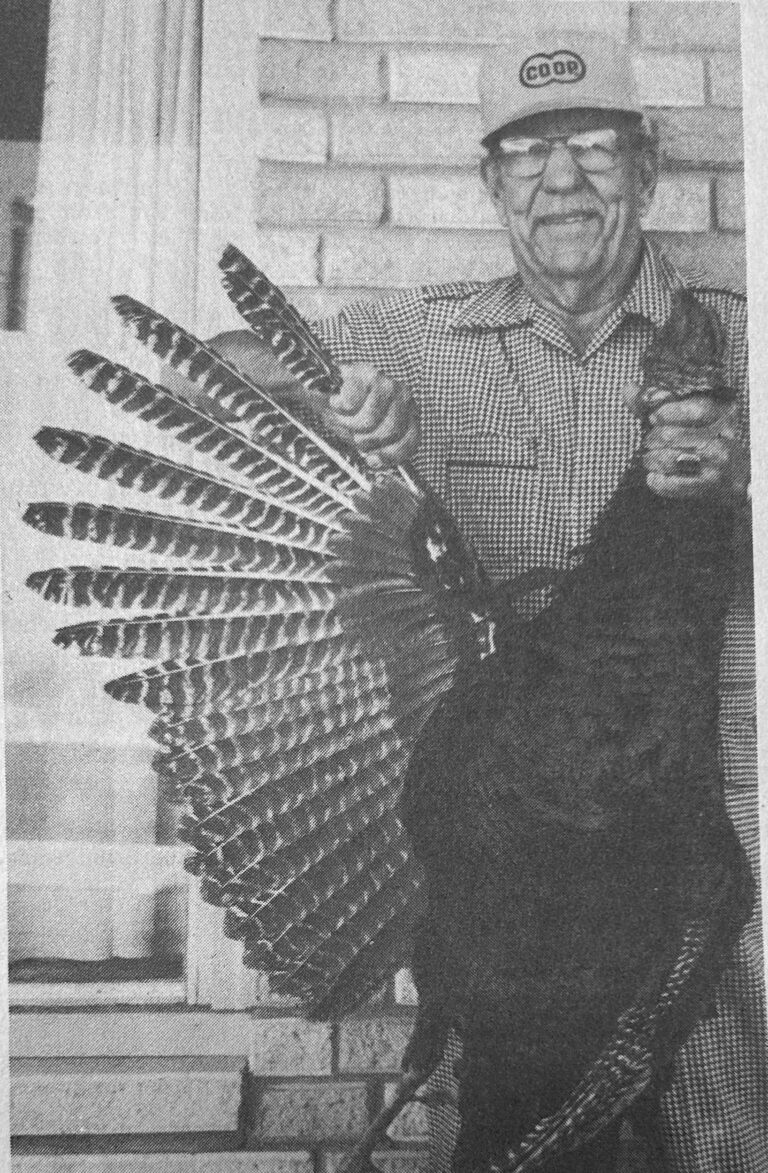Through the Years, July 31

50 years ago
Aug. 7, 1974
— AIRPORT FUND ACTION AT CITY COUNCIL
Tuesday Cassville airport progress will be reviewed by the city council in a regular meeting next Tuesday night. Max Fields, chairman of the Chamber of Commerce airport committee and George Ulmer of Miller-Newell and Associates, will attend the session. Involving an estimated $200,000 the project would bring a 3,400-foot paved strip to the community. Local funds, involving $19,000 for initial land purchase, $25,000 of city funds to be matched by a state grant, and federal grants would pay for the project. Fields says a six week period would be required after council starts required paper work through the FAA before money would be set aside for purchase of property. Involved in the project are CASCO, Inc., a business group which purchased highway frontage and four property owners, Leon Sanders, Bob Gibbons, A. C. Heston and L. D. Pennell. Located northwest of Cassville the facility is planned for a total of 93 acres. CASCO involvement provided 12 acres for the project. Ulmer’s engineering firm is in the process of preparing engineering plans which should be ready for turning dirt this winter if all schedules are met. Airport interests say this would ideally make the facility ready for completion early next year. All phases of the program will be coordinated through the city government and respective government agencies involved. Ulmer’s office in Cassville has been in the process of clearing initial phases over the past few months. Fields visited last week with William Clark of the Federal Aviation Authority in Kansas City, to go over some of the paperwork required for federally financed portions of the project.
— DHI DAIRYMEN USING RECORDS FOR EFFICIENCY
Milk prices are depressed, feed costs are high, labor is a problem and to add to that the is having an extremely hot, dry None of this summer. is good so dairymen try to think of ways to cut down on direct costs. It’s only natural to think about the cost of production testing but before they go too far, he suggests they consider the advantages of testing. High feed costs and lack of feed make it even more important to cull the low profit cows and keep the better cows producing to the best of their ability. DHI records provide the only means of determining which cows are not paying their way by looking at milk per day, milk to feed date, income cost, and difference in herdmates. What is DHI? Dairy Herd Improvement is a national program that has its strength in local associations. The rules and regulations governing DHI testing are set up by a national board comprised of dairymen, extension personnel, USDA personnel, and other dairy representatives. These rules are adhered to by all local associations. The Barry County DHI Association is a most important part of the system. This local association employs a supervisor, Tom Hutchens, who does the testing. Testing involves taking morning and evening milk weights and milk samples for butter fat testing from each cow in the herd. The supervisor also records feeding information as well as breeding dates, calving dates and other breeding information. The dairyman receives monthly report which indicates daily production and income over feed cost and this same information on a yearly basis. He also receives management information on feeding, breeding and culling when he uses his records. At a glance he can tell which cows are making him money and which ones are losing him money.
40 years ago
Aug. 8, 1984
— LEE HONORED FOR 40 YEARS OF SERVICE
Don Lee of Exeter, area highway maintenance supervisor, has been honored by the Missouri Highway and Transportation Department for having completed 40 years service. He joined the department as a laborer and was promoted to his present position in 1960 after serving in a number of maintenance positions.
— DISTRICT AG LOSSES RATED $22 MILLION
Losses in agricultural income in eight southwest Missouri counties has been placed at a figure of $22 million. The estimated loss came from statistics provided in the 1984 Missouri Farm Facts printed by the Missouri Department of Agriculture. Counties involved in the decreased Lawrenco Monude: Bar, Lawrence, McDonald, Newton, Jasper, Barton and Vernon. Figures did not include declines generated by less agriculture dollars going into local economies. Obviously absent from the department report were references to such economic input for the area involving fescue seed production. Throughout the eight-county age, sales of crops, cattle and hogs dropped to $325.5 million in 1983 from $375.8 million a year earlier. Ag interests said the decline could be attributed to less crops planted because of government acreage reduction programs, heat and drought reducing production from planted acres and overall weak farm prices, including cattle markets. There were 569,328 cattle and calves in the eight Southwest Missouri counties in 1983. Cattle sales amounted to $221.8 million, compared with $238.5 million in 1982. This is a decline of almost $17 million in one year. Hog sales brought in $8.8 million in 1983, down $4 million from 1982. There were $156,000 hogs in these counties. Sale of corn, wheat, soybeans, milo and hay amounted to $121.9 million in 1983, down $2.7 million from 1982. Cattle produced more income than any crop in any county. 1983 county farm sale for these products in millions of dollars, with 1982 in parenthesis are: Barry, $45 ($47.8); Barton, $49.7 ($52.3); Dade, $33.7 ($36.8); Jasper, $43.8 ($46.5); Lawrence, $61.8 ($65.9; McDonald, $26.8 ($28.8); Newton, $39.5 ($41.9), and Vernon, $32 ($55.7). The report shows Barton is Missouri’s top wheat producing county. Barton County farmers harvested 3.3 million bushels in 1983, despite government acreage reduction programs. Vernon ranked sixth with 2.4 million bushels, and Jasper eighth with 1.8 million. No Southwest Missouri county ranked in the top 10 for corn or soybean production. Vernon County farmers produced 1.3 million bushels milo in 1983 and ranked eighth in the state. Barton was ninth with 1.2 million bushels milo. Lawrence County had 122,500 head of cattle on January 1, 1984, to lead the state. Greene County was second with 112,300 head. Barry was sixth with 97,500 head. Lawrence County ranked fifth in milk cow numbers with 11,300 head January 1, 1984. Barry was 10th with 8,000 head. Most Missouri hogs are in central and eastern counties. There has been a decline of hogs in Barry county over the past several years. Breakout figures for Barry County included: soybeans, 49,000 bushels, $386,000; wheat, 227,600 bushels, $751,400; corn 42,000 bushels, $159,600; milo, 47,500 bushels, $141,600; hay, 95,000 tons, $6,032,000; cattle, 97,500 head, $36,680,000; hogs, 16,000 head, $896,000.
30 years ago
July 27, 1994
— INVESTOR GROUP BUYS LUCK “E” STRIKE
A group of five investors has joined the Hendricks family as owners of Luck “E” Strike USA in Tranics since 1974, Came 10 Cassville in 1985 from Grenada, Mississippi. Tuesday’s announcement of the ownership change set a six-investor group in charge of the fishing tackle firm that does business on an international basis. Joining John Hendricks, Jr., as managing partners in the firm are Dan Angel and Gary Shaffer both of Wichita, Ks. Both are certified public accountants, having been associated with a firm in Kansas for several years. Both families are moving to Cassville immediately. Three other investors include, Greg Peterson of Beaver Lake, Ark., Bob Haack of Dodge City, Kans. and John Hageman, an attorney from Miami, Fla. Angel and Shaffer said Tuesday morning there would be some aggressive changes in the business operations of Luck “E” Strike in an effort to further expand the market of the well respected baits. Staffers just returned from the American Fishing Tackle Manufacturer’s Association international show in Dallas, Tex., reporting increased interests in baits coming from the Cassville plant. New owner combinations have Luck “E” Strike in a growth mode as the firm is just completing an 8,000 square foot expansion to their headquarters in Cassville industrial park. Added to the 27,000 square feet of original floor space, projections Tuesday were for another growth jump in the near future. Luck “E” Strike will commence plastic bait injection and building of spinner and lead baits in the new facility within the next three week. Currently employing 44 per-sons, 20 additional employees are anticipated in the move to additional space. That number could increase quickly if projected growth plans materialize. Luck “E” Strike USA became Hendrick’s family owned in 1969 when John Hendricks, Sr., acquired the business. At that time it was located at Grenada, Mis. The shift to Cassville 20 years ago eventually led to ownership going to John and Robin Hendricks and his sister Martha Allen. Customer lists of the growing firm covers the United States, including those from the most prestigious of outdoor suppliers to long-time tackle outlets throughout the country. Shipments also leave Cassville for about 20 foreign countries on a regular basis. One outlet in Japan includes 200 retail stores. The managing three-some said this week there newwere lines in the offing, that would be manufactured in Cassville. They anticipate continued growth in the company as line additions are completed. Promotion of the company includes a staff of 14 professional fishermen, Il of whom have qualified for Bass Classic competition this year. The staff anglers are regular visitors to the Cassville head-quarters. Angel’s family, which will reside in Southern Hills, includes his wife Allison, and two sons Matthew and Michael. Shaffer, whose family includes his wife Cheryl and two high school pupils Shane and Jenna, is purchasing property south of Cassville.
— DEMOCRAT CITED FOR 122 YEARS OPERATION
The Missouri Department of Economic Development and governor Mel Carnahan have recently recognized the Cassville Democrat as among those businesses in the state who have been in business in the State of Missouri 100 years or more. Joseph L. Driskill, director, in forwarding a certificate from the governor, said the effort was to “recognize your longevity and dedication.” In his recognition, Driskill said, “It is enterprises such as yours that have caused our state to grow and prosper.” Governor Carnahan’s certificate carried this message: “On behalf of all Missourians, the State of Missouri proudly salutes the management and workforce of the Cassville Democrat in the city of Cassville for 122 years of successful operation in the state of Missouri, producing goods and/or services of the highest quality.” Concluding his message, the governor stated, “We appreciate your confidence and investment in Missouri and wish you continued success and prosperity.”






